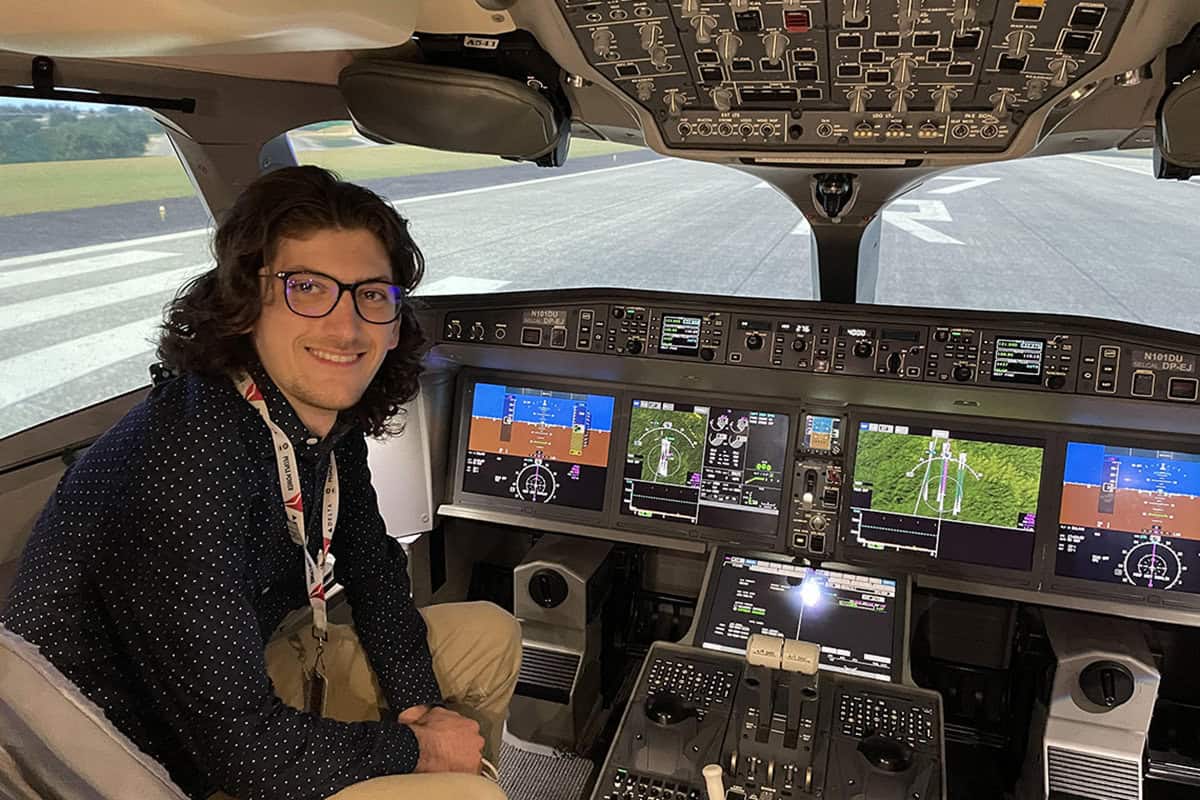
Industrial and Operations Engineering alum speaks at aviation conference
Sinan Abdulhak is presenting two research papers at the 2024 International Conference on Research in Air Transportation at the University in Singapore.

Sinan Abdulhak is presenting two research papers at the 2024 International Conference on Research in Air Transportation at the University in Singapore.
Sinan Abdulhak, a recent alumnus of the University of Michigan (U-M) Industrial and Operations Engineering (IOE) program, is presenting two research papers at the 2024 International Conference on Research in Air Transportation (ICRAT). The aviation conference, scheduled for July 1-4, was be hosted at Nanyang Technological University in Singapore, drawing experts from around the globe to discuss the future of air transportation research and technology.
“I never imagined that research would be the catalyst that bridged my passions for aviation, process improvement, and user-centered design until Dr. Max Li introduced me to the FAA’s Design Challenge and his lab, LATTICE,” said Abdulhak. “From rethinking what an ideal interface for managing 45k daily flights looks like, to exploring the possibilities of Generative AI for easing the workload of Traffic Managers, chipping away at unsolved, real-world air transportation problems has undoubtedly been the highlight of my undergraduate experience.”
User Feedback-Informed Interface Design for Flow Management Data and Services
Abdulhak’s first paper, “User Feedback-Informed Interface Design for Flow Management Data and Services (FMDS)”, details the user-centered interface he and his team of other U-M students designed for the 2023 Federal Aviation Administration (FAA) Design Challenge. This project received the $25k grand prize.

The team’s approach involved user interviews and testing sessions with ex-FAA Traffic Managers and NASA Human Factors Engineers. These collaborative efforts were instrumental in refining the interface to meet the precise needs of its users. The resulting product streamlined workflows for Traffic Management Specialists, which seamlessly integrated evaluation, modeling, and monitoring functionalities – essential for efficient air traffic management.
ChatATC: Large Language Model-Driven Conversational Agents for Supporting Strategic Air Traffic Flow Management
In his second paper, “ChatATC: Large Language Model-Driven Conversational Agents for Supporting Strategic Air Traffic Flow Management”, Abdulhak showcases how large language models (LLMs) can help Traffic Managers by rapidly summarizing thousands of historical air traffic events. By quickly seeing how a past constraint (e.g., thunderstorms) was addressed, such a tool could help Traffic Managers formulate decisions for future events more quickly. This tool was conceived during Abdulhak’s senior year IOE capstone project and later developed in partnership with an FAA Traffic Manager. The ChatATC system offers a use case for innovative language models in aviation, demonstrating how Abdulhak, with Dr. Li’s mentorship, envisions the integration of advanced technologies within crucial sectors
About Sinan Abdulhak

Abdulhak graduated from U-M in May 2024 with a BS in Industrial and Operations Engineering. He is currently a Systems Engineering Intern at Leidos, focusing on redesigning Air Traffic Management interfaces for the FAA and plans to continue designing user-centered interfaces in the commercial aviation sector. During his time at U-M he worked closely with his mentor Max Li who is an Assistant Professor at U-M IOE and Aerospace departments. He was also an active member of the Laboratory for Air Transportation, Infrastructure, and Connected Environments (LATTICE) at U-M. LATTICE is focused on identifying and addressing research problems that contribute towards a safer, more efficient, more resilient, as well as user- and equity-oriented air transportation system and other societal-scale infrastructures. The ICRAT Conference marked his first major aviation conference presentation.